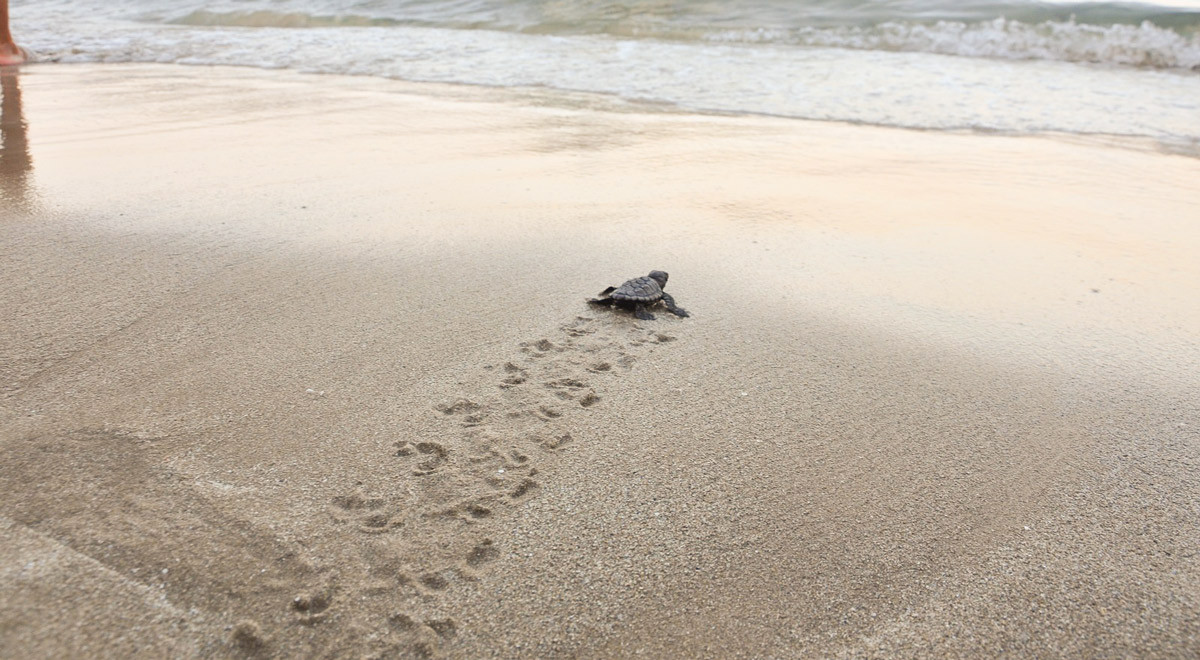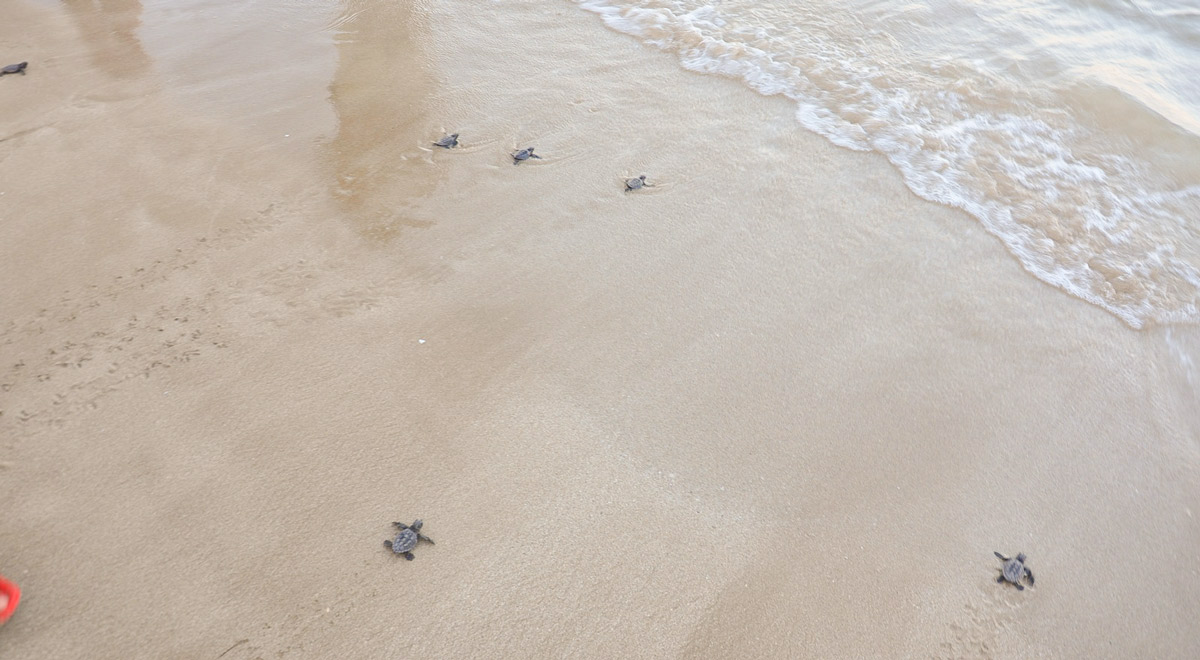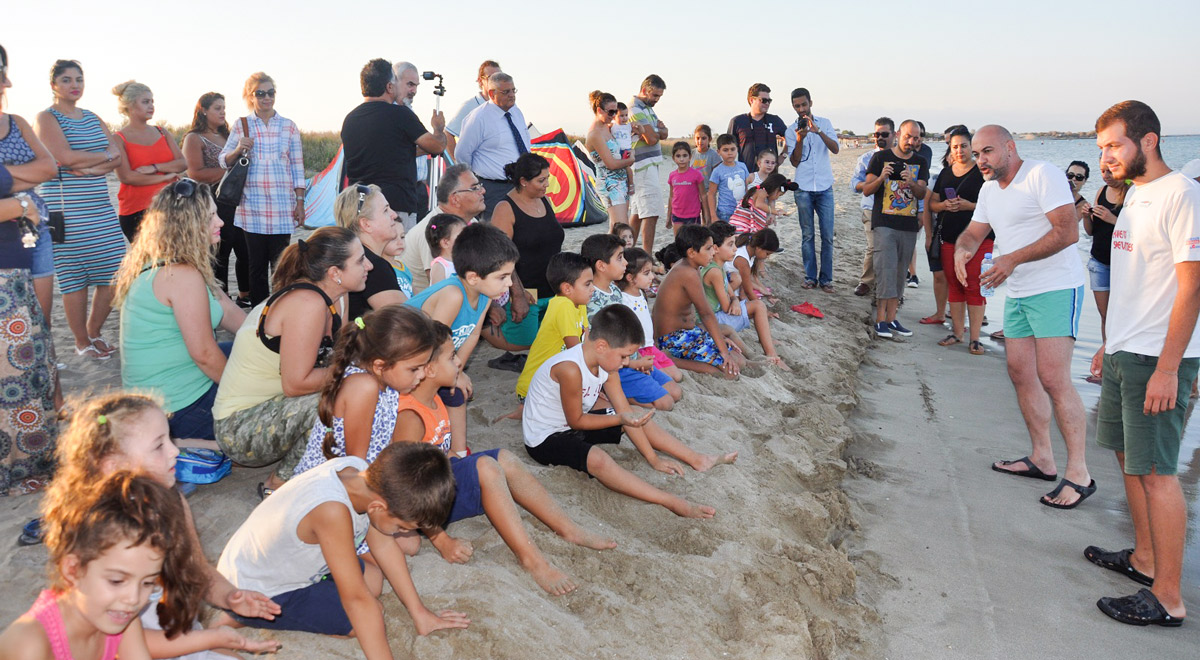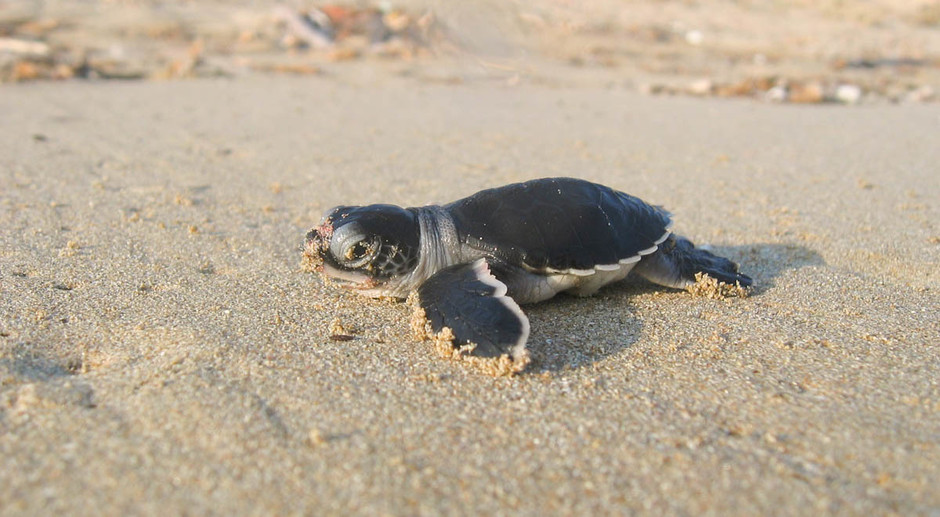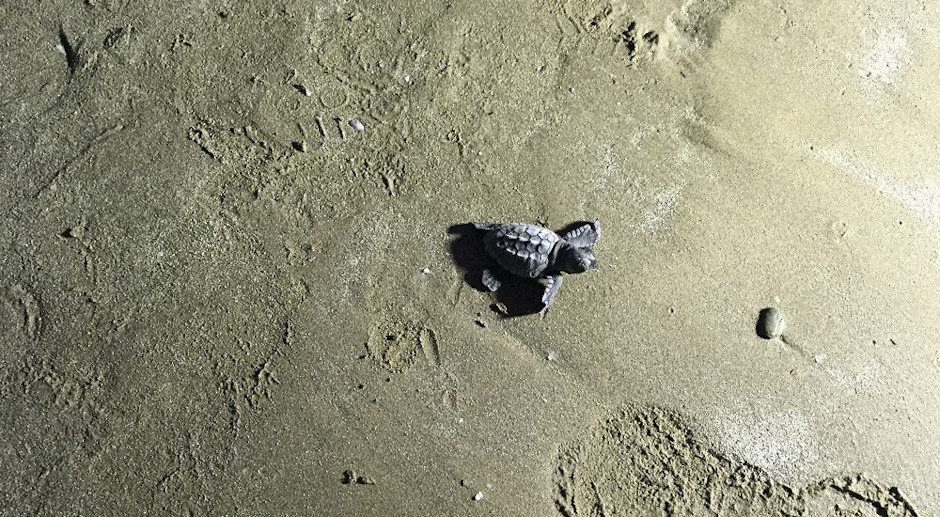The Eastern Mediterranean University Underwater Research and Imaging Center (SAGAM), released baby Caretta Carettas to sea. Within the framework of the project “Research and Protection of Sea Turtles on İskele and Famagusta Shores”, an organisation aiming to highlight the importance of Caretta Carettas (Chelonia mydas ve Caretta caretta) took place at EMU Beach Club with the participation of EMU Rector Prof. Dr. Necdet Osam and Vice Rector in charge of Student Affairs Prof. Dr. M. Yaşar Özden. Many citizens also attended the event that took place on the 8th September 2016.
Chair of EMU-SAGAM and EMU Arts and Sciences Faculty, Biological Sciences Department academic staff member Assist. Prof. Dr. Burak Ali Çiçek stated that this project has been taking place since 2008 and that the TRNC Ministry of Tourism & Environment has been collaborating with certain universities and non-governmental organizations to carry out conservation work on a number of shores. Assist. Prof. Dr. Çiçek noted that this years’ “Research and Protection of Sea Turtles on İskele and Famagusta Shores” project has been run by EMU Rector’s Office and the Continuing Education Centre (EMU-CEC).
Assist. Prof. Dr. Çiçek went on to provide information about the female turtles’ egg laying period: “During the night, eggs the size of a table tennis ball are placed in pits by the females. Most females return to the shore they previously nested on. In fact, they make their new nests very close to their previous nest. In each nest there are approximately 80 to 120 eggs. After 45 to 60 days the hatchlings leave the nest in the early hours of the morning. On some occasions not all hatchlings leave the nest at the same time. If this is the case, the hatchlings that haven’t left the nest leave during the following nights. Hatchlings that leave the nest use the light of the horizon to make their way towards the sea. At this point any light that is present in the opposite direction of the sea can cause the hatchlings to be confused and die as they lose their sense of direction.”
Next, Assist. Prof. Dr. Çiçek spoke about the things that must be done to provide better protection for these charming animals. Assist. Prof. Dr. Çiçek stressed the importance of fishers releasing any turtles they may accidentally catch, quickly and without causing damage to their structure. He went on to state that fast sea vehicles must not be permitted and garbage on and in the beach must be removed. During reproductive seasons, designated shores must not be entered between 20:00 and 8:00. Fires must not be lit and light pollution must be prevented.
Assist. Prof. Dr. Çiçek stated that deep pits need to be dug on shores where reproduction takes place whilst noting that beach umbrellas must not be inserted into these pits. Assist. Prof. Dr. Çiçek also stated that vehicles shouldn’t enter the shores during egg laying season as their tires squash the baby turtles in the nest preventing them from reaching the sea. In addition, pets like dogs must not be allowed on the beach and belongings that might cover nests must not be left on the beach. Finally, no intervention should take place whether turtles are on the shore or in the sea.

